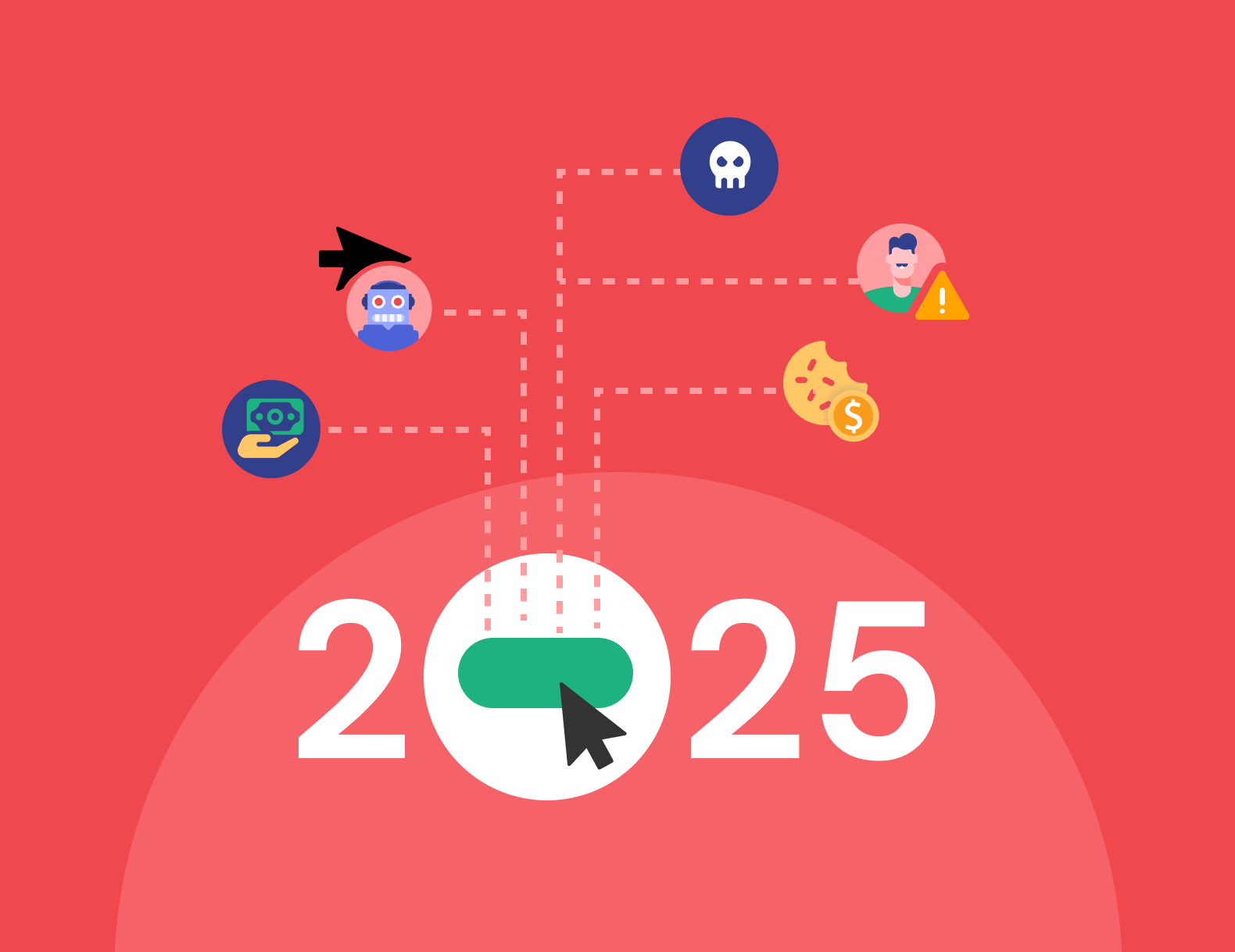Meta Ad Campaigns in 2025: How to Maximise ROI and Stop Click Fraud

Meta’s platforms, Facebook and Instagram, remain two of the most powerful acquisition engines in digital marketing. Their scale and targeting capabilities make them indispensable for consumer brands looking to grow fast. But every opportunity attracts risk. Fake clicks, bots and invalid traffic are quietly draining budgets and polluting optimisation signals, leaving advertisers with rising costs and unreliable data.
To win on Meta in 2026, marketers need more than compelling creative. They need campaigns built on clarity, control and protection. Here is how to make sure every click counts.
Drive authentic engagement
Use built-in interaction tools
Meta’s features like polls, emoji sliders and countdowns turn passive viewers into participants. They spark instant engagement and generate live audience insights.
Turn engagement into intelligence
For eCommerce, polls can spotlight which products to push. For sportsbooks, they can gauge fan sentiment before a major match. These signals help you shape campaigns that stay relevant and perform under pressure.
Stay smart with trends
Participate with purpose
Trends can turbocharge reach when they align with your brand. Seasonal shopping moments are gold for eCommerce. Live sports events provide high-engagement opportunities for betting operators.
Avoid wasted spend
Not every trend is worth chasing. A poorly timed or irrelevant campaign does more harm than good. Relevance is the difference between viral traction and wasted clicks.
Invest in paid promotion
Organic reach is shrinking
Meta deliberately limits organic visibility. Paid promotion is no longer optional if you want scale.
Target with precision
The real ROI comes from precise targeting. eCommerce brands can reach “frequent online shoppers.” Sports betting operators can focus on regulated markets or fans of specific leagues. The tighter the audience, the stronger the outcome.
Stop click bots on social ads
Fake clicks are bleeding budgets
Invalid traffic is not just background noise. In sports betting, where CPCs can exceed US$50, even a handful of fake clicks hits ROI hard. In eCommerce, inflated acquisition costs cut straight into margins.
Meta is a bot playground
Studies suggest that a significant portion of traffic on Meta comes from bots or hyper-clicking automated accounts. These accounts don’t convert - they generate clicks, likes, and shares that inflate metrics and mislead campaign algorithms. Because Meta charges on a CPM basis, each bot interaction also triggers additional impressions, multiplying wasted spend. Over time, this creates a cycle where fake engagement drives more budget toward audiences that will never convert.
Fraud is accelerating
Global ad fraud losses reached USD 84 billion in 2023 and are projected to surpass USD 170 billion by 2028. Around 5 per cent of all ad clicks are fraudulent. With Meta commanding over 20 per cent of US digital ad spend, the stakes are high.
Native filters are not enough
Meta’s built-in protections catch some invalid activity, but sophisticated bots and recycled users still slip through. Clean reporting requires dedicated protection.
Real-time fraud prevention for Meta campaigns
TrafficGuard for Social stops invalid clicks and maximises the performance of your Meta campaigns. Advertisers can:
- Prevent click fraud across Facebook and Instagram
- Stop click bots on Instagram ads in real time
- Protect optimisation signals so campaigns learn from genuine users
For both eCommerce and sports betting operators, this means budgets stay focused on real customers, not bots.
Build trust with live content
Live video builds credibility
Streaming on Facebook or Instagram creates authentic, unfiltered connections. eCommerce brands use it to demo products. Sportsbooks use it to engage fans on match day.
High impact, low cost
It takes minimal effort but delivers strong engagement. Live content is one of the most efficient tools available to Meta advertisers.
Activate employee advocacy
Extend reach through your team
Employees bring credibility and networks that brand channels cannot reach.
Structure advocacy for impact
In eCommerce, “meet the team” content humanises product-focused campaigns. In sports betting, advocacy reinforces transparency and builds trust in competitive markets.
Think multichannel, stay consistent
Do not isolate Meta campaigns
The best advertisers integrate Meta into a larger ecosystem that includes Google Search, YouTube and programmatic.
Repurpose content with consistency
Turn one idea into multiple formats. A product launch can be a live video on Instagram, a carousel on Facebook and a Q&A on LinkedIn. Consistency across platforms amplifies results.
Meta trends to watch
Meta’s AI-powered tools are reshaping advertising. Advantage Plus campaigns are automating creative, targeting and optimisation. As a result, Meta is projected to capture over 22 per cent of US digital ad spend in 2025.
But as AI accelerates ad performance, fraudsters are using the same technology to exploit it. Click farms and generative bots can inflate clicks and engagement at scale for just a few dollars. The only way forward is to combine Meta’s automation with active fraud prevention.
Conclusion: Protect Your Meta Campaigns from Click Fraud
Meta remains one of the most effective platforms for reaching new customers, whether you are scaling eCommerce sales or acquiring players in sports betting. But rising levels of click fraud, bots and invalid traffic make every campaign vulnerable.
Winning in 2025 requires both creativity and protection. Engagement features, live content and employee advocacy drive visibility, but only real-time click fraud prevention ensures those clicks convert into revenue.
TrafficGuard helps advertisers secure Meta campaigns, block invalid traffic and protect ad spend. The result is simple: cleaner data, stronger ROI and growth built on genuine customers.
Discover how TrafficGuard’s click fraud prevention software keeps your Meta campaigns performing at their best.
FAQs & Key Takeaways
- How often should I monitor my Meta campaigns for click fraud?
Weekly reviews may be enough for smaller campaigns, but high-spend advertisers in eCommerce or sports betting operators should monitor traffic daily using automated tools to detect sudden invalid activity.
- What subtle signs of fraud should performance marketers look for?
Red flags include spikes in clicks without conversions, unusual geographic or demographic patterns, and inconsistent attribution across channels. These often signal click farms or fake engagement skewing results.
- Is one-click fraud really as dangerous as large scale bot attacks?
Yes. One-click fraud can bypass basic detection by mimicking human behaviour. Even isolated invalid clicks distort optimisation signals and misallocate budget in precision-driven campaigns.
- What capabilities should I look for in a click fraud prevention tool?
Key features include behavioural detection, real-time blocking, multi-point verification and adaptability to emerging fraud tactics. These are especially critical for fast-moving campaigns on Meta.
- How does click fraud affect Meta’s optimisation algorithms?
Invalid clicks feed false signals into Meta’s machine learning. This causes the platform to optimise toward bots or low-quality users, pushing budgets into the wrong audiences and inflating CPA. Preventing fraud keeps algorithms learning from genuine behaviour, which improves targeting and ROI.
Get started - it's free
You can set up a TrafficGuard account in minutes, so we’ll be protecting your campaigns before you can say ‘sky-high ROI’.
Subscribe
Subscribe now to get all the latest news and insights on digital advertising, machine learning and ad fraud.








